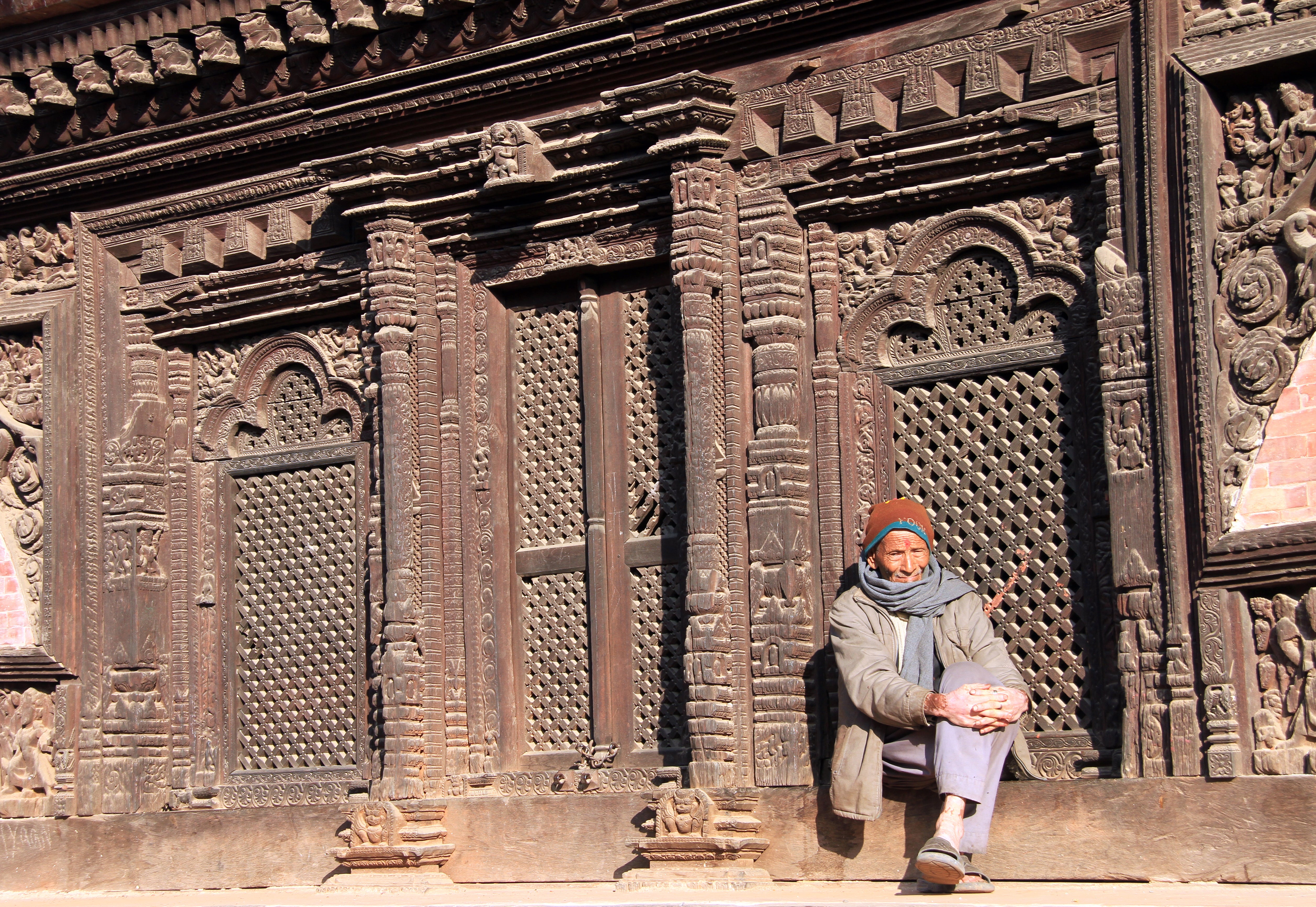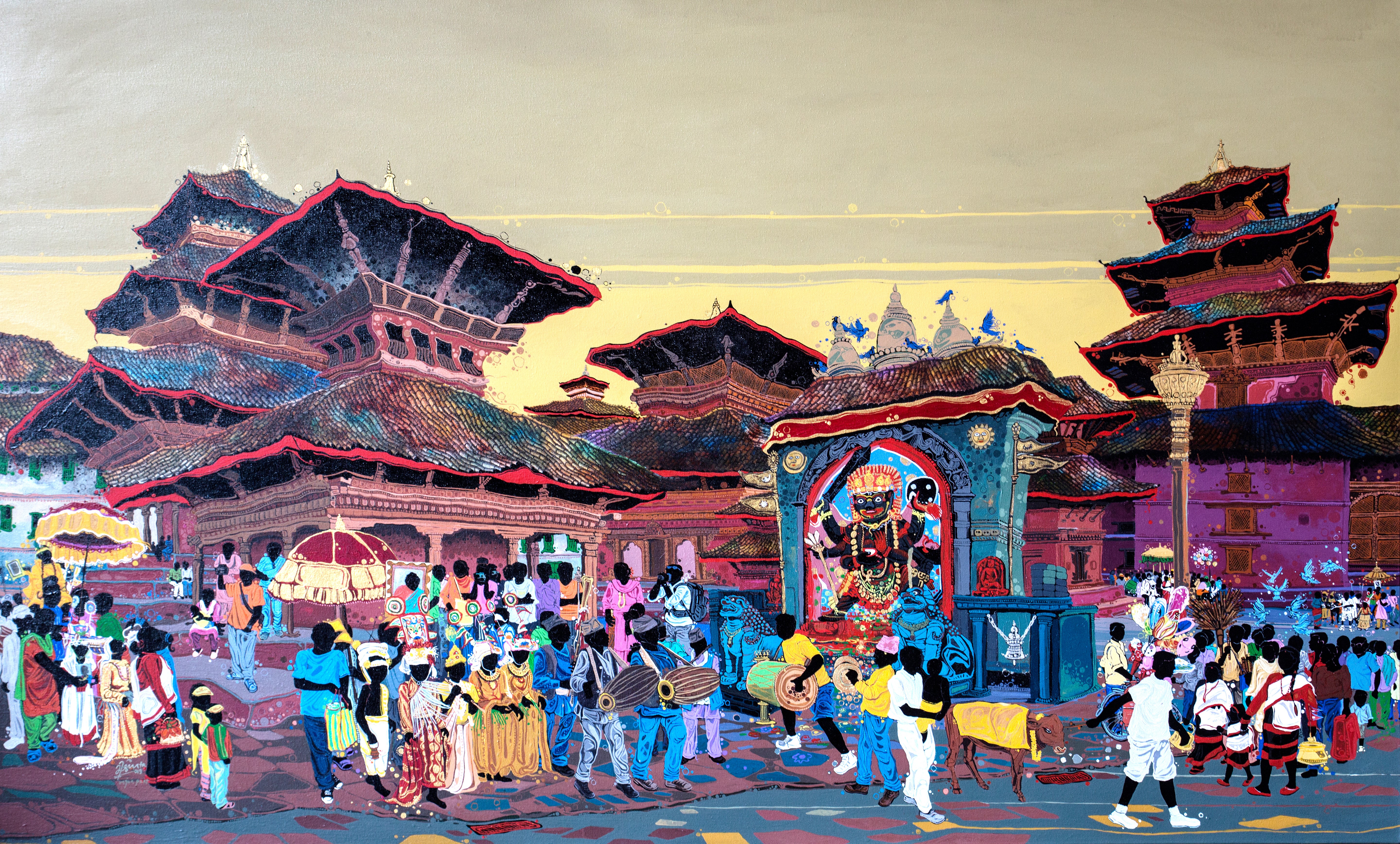How Kathmandu got back to its chaotic best, six years after the earthquake
As Nepal recovers from both the 2015 Gorkha earthquake and the impact of Covid, Sue Watt finds its capital, Kathmandu, as chaotic and charismatic as always – and ready to welcome visitors again

I couldn’t hold back the tears when I’d visited Bhaktapur in Kathmandu Valley in 2015. Six years ago today, these ancient streets were devastated by the Gorkha earthquake that killed nearly 9,000 people as it ripped through the heart of Nepal.
“Long afterwards, people thought they heard ghosts crying and hands reaching from the rubble to be rescued,” Ajaya Prajapati told me when we met eight months later.
Last year, with the country’s Visit Nepal 2020 campaign aiming to attract two million tourists, I’d returned to Bhaktapur to see its remarkable restoration.
“Tourists are back and around 80 per cent of the city has been rebuilt… Income from tourism goes into Bhaktapur’s regeneration,” Ajaya said at his popular Krishna Homestay near Durbar Square. With ornate temples, fairy-tale palaces and pagodas, the square dates to the Golden Age of Newari architecture of the 15th century. We wandered past the gleaming Golden Gate, the lavish entrance to the Royal Palace, and the intricate Siddhi Lakshmi Temple where huge stone animals – lions, rhinos, horses and camels – once again guarded its steps.

As global tourism locked down in March last year, the VisitNepal 2020 promotion was abandoned and the industry that accounts for 8 per cent of the country’s GDP and a million jobs slammed its doors shut. Yet, despite Covid, Bhaktapur is now 95 per cent restored and the striking five-tiered Nyatapola Temple, representing earth, water, fire, air and sky, stands proud once more as Nepal’s tallest temple.
Today, tourism is tip-toeing back. New regulations last month reintroduced visas on arrival and lifted quarantine restrictions for vaccinated travellers. And ambitious mountaineers are currently well on their way to Mount Everest’s summit.

The Himalayas’ jagged snow-capped peaks pierced the clouds as I flew from Kathmandu to Pokhara. Nepal’s R&R capital expects to receive a million passengers annually into its new international airport, which, delayed by Covid, opens in early 2022. They’ll head for hikes in the Annapurnas or simply chill around the alluring Phewa Lake. Most will likely spend time in Lakeside, Pokhara’s main drag. Every time I come, new bars, clubs and hotels add to its lively vibe.
“Pokhara is always changing, always growing. It’s getting quite crazy even without the airport opening,” Deepak Shrestha said, smiling. He owns Mum’s Garden Resort, our favourite guesthouse in the quieter backstreets behind Lakeside. Even these backstreets have smartened up, now numbered like New York’s grid system, and the new lakeshore promenade is bursting with street-food sellers, entertainers and cafes in flower-filled gardens. People amble languidly, watching rainbow-coloured paragliders circling over the lake.
Gautam Buddha International Airport also opens later this year, the pilgrim’s gateway to Buddha’s birthplace, Lumbini. Soon, travellers to Nepal can avoid Kathmandu altogether. But it would be a shame to miss the country’s chaotic yet charismatic capital.

Thamel, Kathmandu’s tourist district, is its Marmite area – some hate it, but I love the narrow streets stuffed with souvenir stalls, trekking shops and myriad restaurants and bars.
MoNA, the world’s first Museum of Nepali Art, opened here in February last year, showcasing traditional and contemporary artworks. Its home is a new annex to the historic Kathmandu Guest House (KGH) built following earthquake damage to the former Rana Palace, whose guests have included Edmund Hillary and the Beatles.
Due to the pandemic, MoNA’s first exhibition, Tangential Stress 2020, was online, a contemporary exposition on the emotional effects of Covid-19. In November, when Nepal’s museums reopened, it too finally opened its doors.

KGH’s owner and avid art collector Rajan Sakya is the passion behind MoNA. “I saw our best art being sold out of the country, never to be seen by young Nepalis,” he said over coffee in the hotel’s marigold-filled gardens. “Only Nepalis can tell the world about Nepali art – it’s our identity. MoNA is about reviving traditional art that represents our faith, history and spirituality. It’s about exploring inventiveness in our contemporary art. It’s a celebration of our national pride.”
The hotel remained open throughout lockdown, with the KGH Foundation distributing 25,000 food parcels to families. The Foundation’s director, Shaguni Sakya, explained how it’s alleviating a darker consequence of the Gorkha Earthquake. “Traffickers promised poor children the world in Kathmandu. Child labour, prostitution and fake orphanages are rife. We want Thamel to be child-safe.” With tourist police and NGOs, they’re raising awareness among visitors, establishing helplines and training trafficked girls for jobs in KGH Hotels.
Kathmandu undoubtedly has its downsides: it’s overcrowded and polluted, although smog from recent aggressive wildfires on the hillsides is now easing. But beyond the grime, there’s grace, especially at Hanuman Dhoka Durbar Square, the capital’s equivalent to Bhaktapur’s. Political wrangles and then lockdown delayed restoration, but that’s back on track, with stonemasons piecing together monuments like giant jigsaws while statues wait to be returned to their rightful places.
Funded by Buddhist donors, the restoration of the beautiful Boudhanath Stupa took just 18 months. Among the world’s largest Buddhist temples, it’s the size of a football pitch. In 2015, its golden spire had been dismantled: bereft of fluttering prayer flags and Buddha’s all-seeing eyes, the dome looked naked and sad.
This time, I joined tourists and scarlet-clad monks turning prayer wheels and shuffling clockwise around the stupa. Buddha’s piercing blue eyes watched over us once again, among brightly coloured prayer flags and the melodic strains of Buddhist mantras floating from nearby stalls.
This is my happy place in Kathmandu: I can’t wait to return, just as soon as travel reopens...
Travel essentials
Getting there
Flight options from London to Kathmandu include Turkish Airlines via Istanbul, Qatar Airways via Doha and Etihad via Abu Dhabi.
Staying there
Kathmandu-based tour operator Explore Himalaya Travel and sister company ehttravel.com can arrange accommodation and travel in Nepal.
Krishna’s House, Bhaktapur: From £18-£25 for a double room B&B
Mum’s Garden, Pokhara: From £44 for a double room B&B
Kathmandu Guest House, Kathmandu: From £44 for a standard double room B&B.
MONA: International visitors $10 (£8) entrance fee
Join our commenting forum
Join thought-provoking conversations, follow other Independent readers and see their replies
Comments